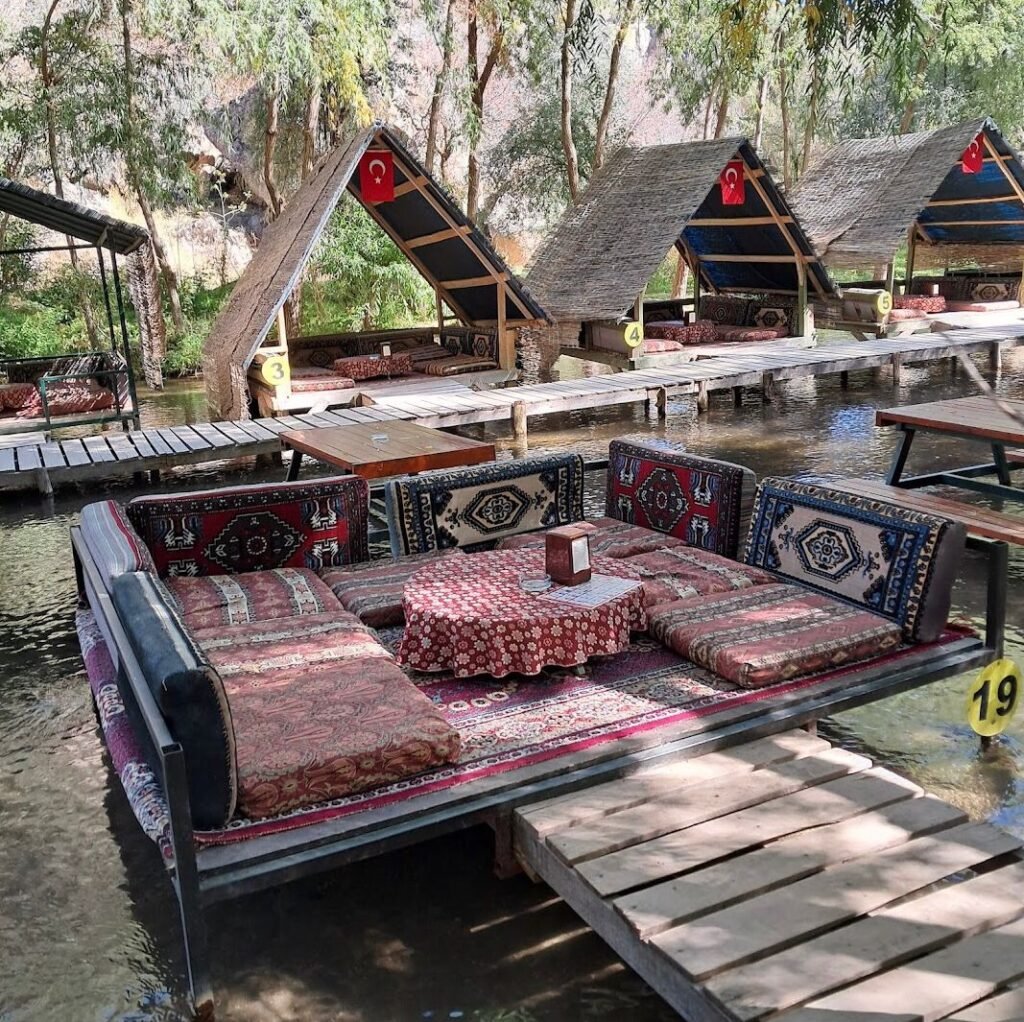Description
Ihlara Valley: A Hidden Gem in Cappadocia
Nestled in the heart of Cappadocia, Turkey, the Ihlara Valley is a treasure trove of natural beauty, history, and spirituality. Stretching approximately 14 kilometers along the Melendiz River, this lush canyon is a stark contrast to Cappadocia’s arid landscape. Known for its striking scenery, ancient rock-cut churches, and serene ambiance, the Ihlara Valley attracts travelers looking for an off-the-beaten-path adventure.
A Geological Wonder
The origins of the Ihlara Valley date back millions of years when volcanic eruptions from nearby Mount Hasan and Mount Erciyes blanketed the region with thick layers of basalt and tuff. Over time, the Melendiz River carved a deep canyon into the soft volcanic rock, creating the lush valley we see today. With steep cliffs towering up to 150 meters and a river winding through a verdant landscape, the valley is a striking juxtaposition to Cappadocia’s iconic fairy chimneys and barren plains.
A Journey Through Nature
For nature enthusiasts, the Ihlara Valley is a paradise. The walk along the valley floor is a delightful journey through a tapestry of wildflowers, willow trees, and poplars, all set against the soothing sound of the Melendiz River. The trail is well-marked, offering routes of varying lengths to suit different fitness levels.
The most popular starting point is the village of Ihlara, where visitors descend a staircase of nearly 400 steps into the canyon. From here, the hike can be as short as a few kilometers or as long as the entire 14-kilometer stretch to Selime Monastery. The walk is mostly shaded, making it comfortable even during the warmer months. Along the way, you’ll encounter rustic cafes and picnic spots, perfect for resting and enjoying the tranquility of the valley.
A Spiritual Retreat
The Ihlara Valley is more than just a natural wonder; it’s also a place of deep historical and religious significance. During the early centuries of Christianity, the valley served as a haven for monks and ascetics fleeing persecution. They carved churches, monasteries, and dwellings into the valley’s cliffs, creating a network of religious sanctuaries.
Today, there are nearly 100 rock-cut churches and chapels scattered throughout the valley, many adorned with frescoes that date back to the 9th and 13th centuries. These frescoes, depicting biblical scenes, saints, and religious motifs, reflect the artistic and theological influences of the Byzantine period.
Some of the most notable churches include:
- Ağaçaltı Church (Church Under the Tree): Located near the valley’s main entrance, this church features vivid frescoes of Christ, Mary, and various saints.
- Pürenliseki Church: Known for its unique two-story design and frescoes of the Last Judgment and the Nativity.
- Kokar Church (The Fragrant Church): Named for the fragrant herbs that once grew nearby, this church boasts intricate frescoes depicting the life of Christ.
Each of these churches offers a glimpse into the lives and devotion of the early Christian communities that once thrived in the valley.
Exploring Local Villages
The villages surrounding the Ihlara Valley, such as Belisırma and Selime, add another layer of charm to the experience. Belisırma, located midway through the valley, is a quaint riverside village where visitors can enjoy a traditional Turkish meal at one of the many riverside restaurants. The freshly grilled trout, served with local mezes, is a must-try.
At the northern end of the valley lies the Selime Monastery, a sprawling complex of rock-cut chambers, chapels, and tunnels. Perched high on a cliff, the monastery offers panoramic views of the valley and the surrounding landscape. It’s an impressive finale for those completing the full hike.
Practical Information
- Getting There: The Ihlara Valley is located about 80 kilometers from Nevşehir and 40 kilometers from Aksaray, making it easily accessible by car or guided tour. Public buses and private shuttles are also available from nearby towns.
- Entrance Fees: As of 2024, the entrance fee is approximately 300 Turkish Lira, though discounts are available for students and groups.
- Best Time to Visit: The valley is beautiful year-round, but spring and autumn offer the most pleasant weather for hiking. During these seasons, the foliage is particularly vibrant, adding to the valley’s allure.
- What to Bring: Comfortable walking shoes, water, sunscreen, and a camera are essentials. If you plan to explore the churches, a flashlight may come in handy.
A Unique Cappadocia Experience
While Cappadocia’s fairy chimneys and hot air balloons steal the spotlight, the Ihlara Valley offers a quieter, more intimate experience. It’s a place where history and nature converge, where the whispers of ancient monks blend with the rustling of leaves and the babble of the river.
Whether you’re an avid hiker, a history buff, or simply someone seeking a peaceful escape, the Ihlara Valley promises an unforgettable journey. This hidden gem is a testament to the rich cultural and natural heritage of Cappadocia, inviting visitors to step back in time and immerse themselves in its timeless beauty.
Plan your visit to the Ihlara Valley, and prepare to be captivated by its serene landscapes and profound history.
Location
-
Harmanlık, 68502 Ihlara/Güzelyurt/Aksaray





